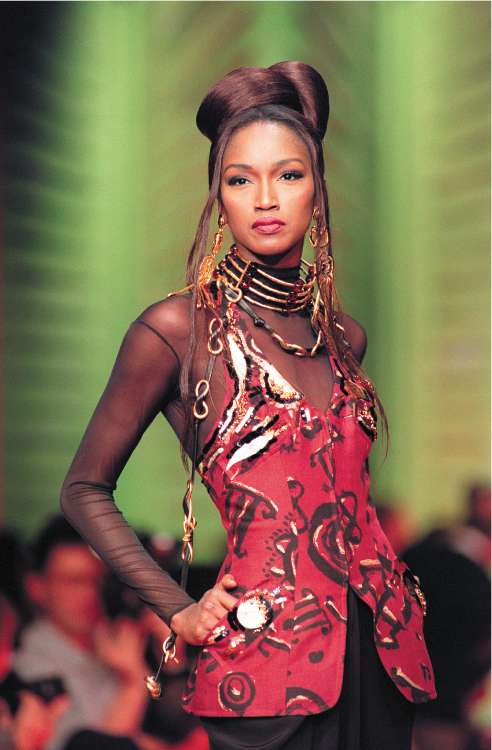Supermodel Katoucha found dead in river Seine

Police in Paris have found the body of one of the world's first black supermodels, a month after she went missing on her way home from a party.
Katoucha Niane, who became a global catwalk star in the 1980s, disappeared on 31 January while returning to her houseboat moored in the centre of Paris. Her body, which a passer-by spotted under a bridge on Thursday, bore no marks that suggested she had been attacked. "She fell into the water and went straight to the bottom," a source close to the investigation said.
Police said a post-mortem examination would be performed to establish whether the 47-year-old had been under the influence of alcohol or drugs when she fell into the water, and whether drowning was the cause of death.
Katoucha, as she was universally known, was one of the first black African models to achieve worldwide stardom. Only after she had stepped down from the catwalk, at the age of 34, did she reveal the traumatic secret from her childhood in Guinea, west Africa, that lay behind the self control and sense of powerful femininity that she displayed in her professional life.
Modelling, she said, was a kind of revenge for the terrible experience of genital mutilation which she was put through, in accordance with custom in parts of Africa, when she was just nine years old. "One day, my mother said we were going to the cinema. And I found myself the victim of a horror movie, an unimaginable trauma that I had never managed to talk about, until I found love and wrote In My Flesh" she wrote in her autobiography, In My Flesh, published in 1994.
After that, she wrote: "I embodied the most arrogant and admired kind of femininity, I who was supposed to be diminished."
Also in 1994 she founded Association Katoucha pour la lutte contre l'excision, to campaign against the practice and provide help for the women who had been subjected to it. Her website urged: "Let's draw attention to the religious, medical, psychological and social realities of this ancestral practice."
She first became famous as a model for Thierry Mugler, Paco Rabanne and Christian Lacroix, but it was being the face of Yves Saint Laurent in the 1980s that made her a star. Dominique Deroche, the head of PR at the fashion house, said: "She was exactly like a Yves Saint Laurent drawing, a proud head on a long neck, very slim but with strong shoulders, made for haute couture."
Join our commenting forum
Join thought-provoking conversations, follow other Independent readers and see their replies
Comments